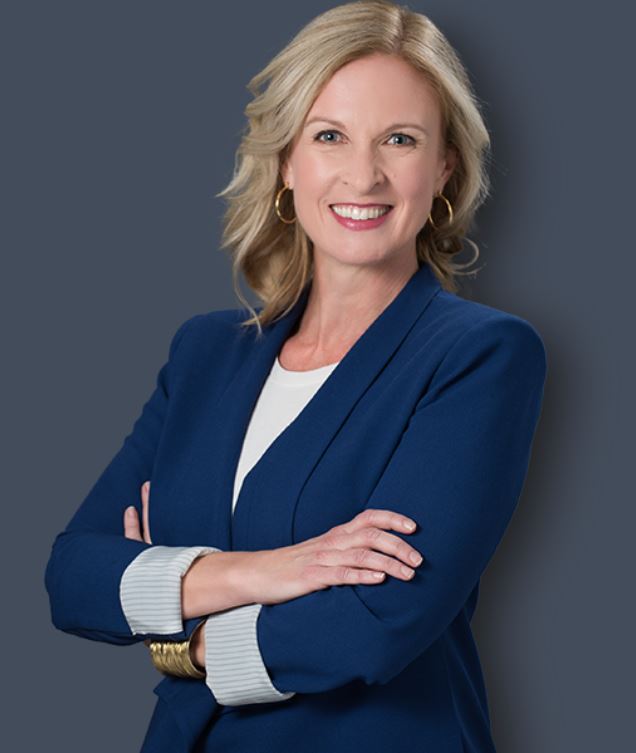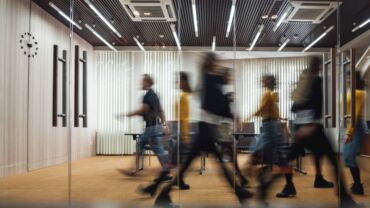In an interview with diversity and inclusion consultant Jennifer Brown, she shares how she defines what it means to be an ally, helps us understand the struggle that carrying multiple stigmatized identities can entail, and how men can use a time where they experienced exclusion to connect with the experience of an individual from an underrepresented community
As a part of a miniseries on male allies and the Thomson Reuters Institute’s diversity and inclusion initiative, we sat down with Jennifer Brown, diversity and inclusion consultant, author and speaker.
Legal Executive Institute: How do you define allyship? And where did it actually start?
Jennifer Brown: Although the concept has always existed, I remember on a personal level learning about ally behaviors based on the role of certain white leaders who were visible during the civil rights era, who stood up alongside people of color, who went to march, and used their privilege. They lent their voices, bodies, minds, hearts and presence to the effort. Allyship really meant the engagement of the majority group that helped the civil rights movement build momentum and gain much-needed support.
When I came out in the early 1990s as an LGBT+ person, my first exposure to allyship was straight allies, and those allies have been an important part of the LGBT+ community. Seeing the improvements that we needed at a policy level, at a human rights level, and at a social progress level, the joining of allies to the conversation gave our movement legitimacy. It gave us air cover and safety. Straight allies have helped our community be more broadly accepted, and we saw the impact of this when we were able to achieve marriage equality.
We are all intersectional. We all have multiple-intersecting identities that bring varying degrees of challenge, depending on the situation.
In the intervening years since I came out 25 years ago, I became a corporate consultant and somebody who specializes in diversity and inclusion. As someone from Generation X, I am seeing allyship continuing to broaden with the Millennial generation and on the heels of police shootings and Black Lives Matter. We live in a hyper-connected world, and young people identify more and more with each other’s identities and struggles — the intersectionality is a priority for them.
Straight allies for the LGBT+ community mainstreamed allyship. Black Lives Matter has further enhanced the concept, and the Women’s March and the #MeToo movement have mainstreamed the question, “Are you a male ally?”
What is “intersectional allyship”? And how would you describe it?
Let us define intersectionality first, which was originated by Kimberlé Crenshaw. She talked about intersectionality as the intersection of multiple-stigmatized identities. If you are a woman of color, you have dual-stigmatized identities. If you’re a queer woman of color, you have triple-stigmatized identities. Each one of those identities carries its own level of implications, in terms of our ability to be authentic and treated equitably.

We are all intersectional. We all have multiple-intersecting identities that bring varying degrees of challenge, depending on the situation. Even if you have multiple-stigmatized identities, you may still have a level of privilege stemming from another aspect of your identity. For example, if you are cisgender, you walk through the world with a congruent sense of your physical gender, and your internal sense of gender. If you are able-bodied, you might have a privilege in terms of your lack of need for accommodations. By this logic, if you are a queer cisgender man of color, you have male privilege.
Using myself as an example, I have two stigmatized identities as an LGBT+ person and as a woman, but I also have my identity as a white person. These identities intersect in interesting ways. My ethnicity is relatively less stigmatized in the business world, for example, so my goal is to be called an ally to colleagues of color who may struggle to be heard more fully. On the flip side, as a woman and as an LGBT+ person, I need male allies and straight allies. I can also be an ally to someone with relatively more privilege than I have, in terms of assisting them in their own learning process about navigating difference, and in their own journey towards allyship. Intersectional allies wear multiple hats, as we attempt to create change around us.
Explain your concept that everyone has a “diversity story.” What is a diversity story and how does it relate to the majority group, which, in this case in the professional context, is white men?
As a starting place, we need to remember that certain people do not get their stories told, or do not feel comfortable telling their stories because they don’t feel safe to do so. As we work to bridge divides in the workplace and create equity and belonging across differences, these are the stories that should be centered and shared, first and foremost.
More broadly, a diversity story can be any life experience, identity, or attribute that causes someone to feel excluded. There are many who share a common experience of exclusion but remain on the sidelines, wondering, “What do conversations about inclusion have to do with me?” The truth is, these conversations have everything to do with everyone.
Many of us conceal a lot about ourselves in order to fit in, including the majority of leaders — who are mostly straight white men. It is easier for us to leave pieces of ourselves out of the picture when we come to work, but our work suffers when we do that. So, too, does our sense of connectedness with those we work with.
We need to remember that certain people do not get their stories told, or do not feel comfortable telling their stories because they don’t feel safe to do so. As we work to bridge divides in the workplace and create equity and belonging across differences, these are the stories that should be centered and shared, first and foremost.
Examples of situations where straight white men, for example, may have felt the pain of exclusion include abuse; the experience of being impacted by a disability or having a loved one with a disability; growing up socio-economically disadvantaged; being a parent and terrified for a daughter’s safety; having a partner of a different nationality or ethnicity; having a child from another country; or struggles in the family with issues of addiction or suicide.
Traditionally, leaders have not so readily shared the moments in which they felt like they didn’t belong, because that would require embracing vulnerability and revealing weakness. But if we want to bridge divides in the workplace, create a culture of safety and belonging, and bring teams together across differences, finding the courage to share can help cultivate a deeper connection with those around us because of the common emotional experience of exclusion.
I have heard you say, that the “most powerful allies can be from underrepresented groups.” What do you mean by this statement?
It is a provocative statement, because some of us are already carrying more of the responsibility than we should for the conversation because of who we are. To think of ourselves as potential allies for others can seem like even more labor. But as an LGBT+ woman who is also white, even though I identify as part of a stigmatized community, I can also be a tremendous ally to a person of color, because I share an experience of being part of an underrepresented group and can use my identity as a white person of privilege to amplify their needs. Intersectional allyship can come from any direction, from any identity or multiple identities, and can be especially powerful when you have firsthand experience as a teacher.
Having said that, many of us are tired of teaching those in the majority/dominant group, and the burden should not be on us. People in the majority/dominant groups need to do their own work to educate themselves about how they can be better allies, rather than leaning on somebody from an underrepresented group to educate them about what it’s like to hold that identity.






